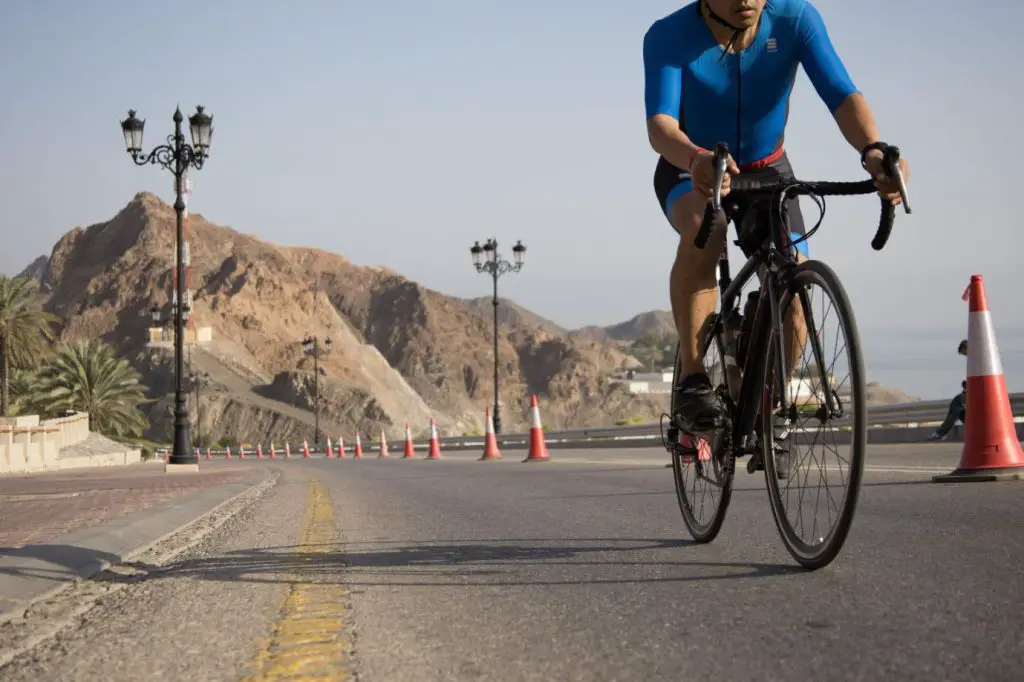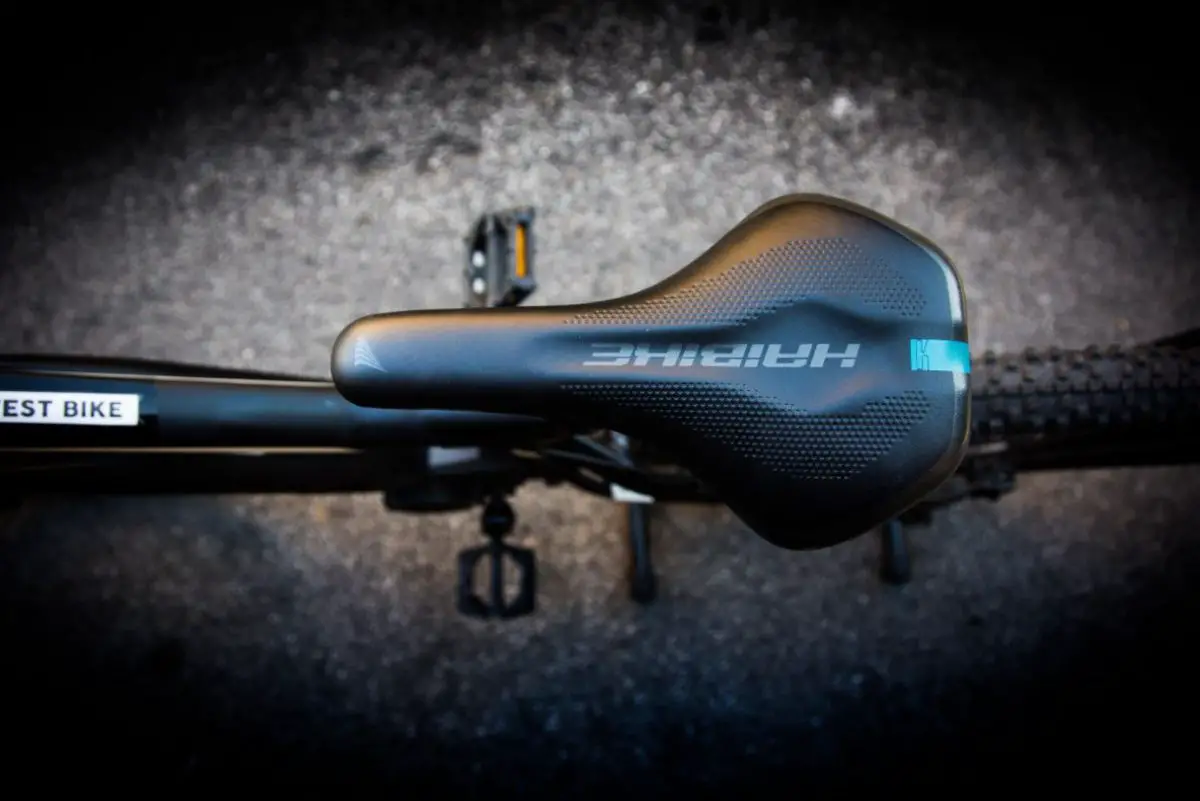Last updated on August 27th, 2023 at 04:28 am
Picture this: you’re pedaling along comfortably when you start to slowly slide forward on your bike seat.
Before you know it, you’re perched on the tip of the saddle, putting pressure on sensitive areas and causing hand and back strain.
This is a rather common cycling problem.
If you find yourself constantly repositioning and can’t seem to stay planted in one spot on your bike seat, it’s time to make some adjustments.
In this post, I’ll go over the common causes of sliding forward on bike saddle and give tips to stop creeping up on the nose of your seat.
With a few simple tweaks you can put an end to this annoying issue.
Why Do I Slide Forward On My Bike Seat?
There are a few reasons why you might be sliding forward on bike saddle. These are:
Also Read: Why Is My Cassette Wobbling?

Saddle Positioned Too Far Forward
The most obvious reason you may slide forward is if your saddle is simply positioned too far forward on the seat post rails.
This misadjustment effectively shortens your cockpit, requiring you to reach farther for the bars.
With your weight shifted ahead, you’ll continually slide forward as you pedal.
Short Stem Or Handlebar
Stem length plays a key role in weight distribution.
A stem that is too short can cause you to pull forward on the handlebars, shifting weight forward off the saddle.
Adding length to your stem can allow you to balance rearward.
Handlebars positioned too far below your saddle will also force you into an aggressive downward position, shifting weight forward onto the arms.
This makes sliding inevitable.
Smooth, Polished Saddle Surface
Over time, the top of your saddle can become polished and worn, especially with synthetic cover materials.
This smoothness provides less friction to keep you planted, allowing easy sliding along the saddle’s surface.
Also Read: Why Is My Bike Making Popping Sounds?
Saddle Shape And Angle
Subtle contours in your saddle can also facilitate sliding. Many saddles slope slightly downward from tail to tip.
This downward angle forces your sit bones forward when putting power into pedals.
Plus, you’ll also slide forward on bike saddle if the tilted down a lot.
How To Stop Sliding Forward On Bike Saddle
With the common causes in mind, here’s how to stop sliding forward on bike saddle and get balanced:
Move The Saddle Back
Sliding your saddle back will center your weight directly over the bottom bracket and pedals.
Use a 4mm or 5mm hex wrench to slightly loosen the clamp bolt on your seat post or seat tube that secures the saddle rails.
Slowly move the saddle back a few millimeters at a time, retightening the bolt and riding to test each position.
Go back only as far as needed to eliminate sliding and achieve proper balance on the bike.
Tilt The Saddle Up Slightly
A saddle that’s slightly tilted upwards will stop sliding.
Using a small adjustable wrench, you can turn the nut at the front of the saddle rails to alter the tilt. But be very incremental with tilt changes – start with just a 1° uptilt.
Too much forward tilt can improperly add pressure to sensitive areas.
A slight upward tilt engages your sit bones and “locks” you in place.
However, if you go beyond 3-5° of tilt, you may feel excessive pressure and discomfort.
Find the sweet spot in degrees of tilt that keeps you anchored without causing new fit issues.
Check Saddle Height
Set your saddle height using the heel method – with your pedal at 6 o’clock, place your heel on the pedal. With your leg straight, your knee should be completely extended but relaxed.
If your saddle is too high, it effectively tilts your hips forward, forcing sliding.
If the height is too low, you’ll lack leg extension and power.
Recheck your measurements and make minute height adjustments of just a few millimeters until you find the ideal position that stops sliding.
Raise Handlebars if Too Low
Use the included spacers under your stem to raise handlebar height in small 5-10mm increments. The goal is to bring your bars closer to saddle height, reducing forward reach and strain.
Ride after each adjustment to check sliding until you find the optimal hand positioning.
Use Chamois Cream Or Wear Bike Shorts
Chamois cream greatly enhances friction with your saddle to avoid sliding.
Apply liberally to the chamois before every ride. The emollients grab onto the saddle’s surface while reducing chafing and friction on your skin.
High quality cycling shorts also have an anti-slip chamois material that helps grip.
Upgrade your shorts if needed to maximize stickiness.
Choose Textured Saddle Surface
Replacing your worn, smooth saddle with one featuring textured top material can work wonders.

Also Read: Hydraulic Disc Brakes No Pressure
Seek out saddles with tactile finishes like rubberized grippers,perf-like patterns, or heavy texturing. This added texture interfaces with your shorts to resist sliding forces as you pedal.
Rougher finishes provide the surface friction necessary to keep you locked in position.
Get A Saddle With Proper Shape
In addition to surface texture, the overall shape and contours of your saddle impact sliding.
Buy a saddle matched to your anatomy with a flatter platform and supportive contours to hold your sit bones in place.
Work with a fitter to determine the ideal shape that won’t slide you forward on the bike.
Frequently Asked Questions
Let’s go over a few FAQs:
How Far Forward Should Bike Saddle Go?
Your saddle should be positioned far enough so that your sit bones are centered over the pedal spindles when the cranks are level. Generally, having the tip of the saddle directly above or slightly behind the bottom bracket will provide optimal weight distribution.
Should The Saddle Be Forward Or Back?
For most riders, the saddle should be set back on the rails, not pushed forward. Having the saddle too far forward shifts weight too far over the pedals, reducing stability and forcing you to slide forward while cycling.
How Do You Know If A Saddle Is Too Far Forward?
If your saddle is too far forward, you may experience discomfort in your hands, arms, or shoulders, as well as pain in your lower back or hips. You may also find it difficult to pedal efficiently, as you’ll be putting too much weight on your hands and arms.

